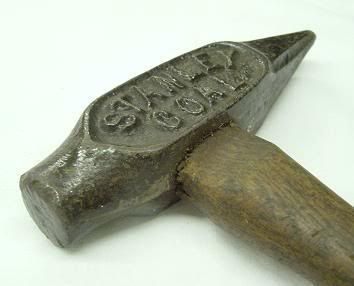Because gunpowder varied in explosive power, gunsmiths needed devices to test particular batches. By the 1500's, elaborate powder testers were available. This one resembles contemporary military pistols and may have belonged to a military gunsmith. Pulling the trigger ignited a measured amount of powder in the tube atop the tester, turning and locking a spring-loaded, numbered wheel. The number at which the wheel stopped indicated the powder's strength. The development of self-contained cartridges during the 1800's made powder testers obsolete.

A different model of black powder tester, another type of eprouvette is described here.

From John Sindelar's collection.

Click here to see a larger image

1008. Lineman's climbing irons, patent number 1,632,688

Larger image.

1009. Multi-faced or polyhedral sundial, with 29 gnomons (the parts that cast shadows), this device demonstrates the craftman's interest in solving intricate puzzles, rather than any practical application of his knowledge.



Larger image

Larger image
Close-up #1
Close-up #2
1010. Coal hammer, they would give one of these to people when a truckload of coal was delivered.


From Jim Brown's collection.
1011. This was marked "book press", though it looks exactly like a letter copying press on this page.

1012. Another polyhedral sundial, this one has twelve faces (including the bottom) and like the previous one it was probably made as a show of skill.



Larger image
Close-up #1
Close-up #2
Close-up #3
Last week's set is seen below, click here to view the entire post:

More discussion and comments on these photos can be found at the newsgroup rec.puzzles.
No comments:
Post a Comment